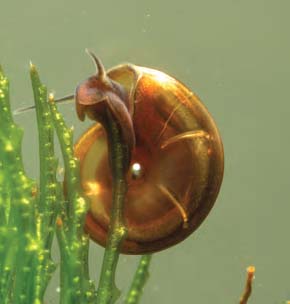|
Hornsea Mere is the largest natural lake in Yorkshire, covering some 467 acres and is situated just one mile from the Yorkshire coast on the landward side of the village of Hornsea. The Mere is fringed by reeds-wamp which has many similarities to the East Anglian Fens. An examination of the fossil record indicates that the coastal strip from Flamborough in the north to the Wash in the south contained a number of similar Meres which have all been lost due to coastal erosion. S. nitida was first reported from Hornsea Mere in 1881, on the occasion of the Yorkshire Naturalists’ Union excursion held on 6th of June of that year. Mr J. Darker Butterell, in the company of W. Denison Roebuck collected a series, stating that it was common but local and had a predilection for the shallow water on the grassy margins of the Mere. (Roebuck, 1883). Tom Petch, in 1904 states that “this species seems to prefer the shelter of the reeds, and may best be found along the first plantation on the Seaton Road or near the snipe ground on the south”. (Petch, 1904). Both of these areas have been systematically searched on various occasions over the past 50 years, with no result. On Saturday the 7th July 2007, the Yorkshire Naturalists’ Union had arranged access to an area of the Mere not usually available to the public and so three of our members, David Lindley, Terry Crawford and Adrian Norris, took the opportunity to re-visit the Mere and examine an area previously out-of-bounds. The recent prolonged heavy rains had caused the Mere to overflow, thereby flooding nearby fields, as well as some houses on the northern shore. The flooding thus restricted the areas we could access with safety, resulting in the owners placing a health and safety bar on access to the wet woodland to the west of the Mere. Due to the flooding situation, two areas were indicated as being safe for access to the lake shore itself. These were at the eastern end near the village of Hornsea, an area noted as the cemetery due to the large numbers of dead shells washed ashore, and the area of the old duck decoy on the southwestern edge. This area is to the west of the ‘snipe ground’ mentioned by Petch. It was this area that we had never been able to access, so we trekked across the wet fields and, to our delight discovered a thriving colony of Segmentina nitida amongst submerged vegetation at the entrance to the inlet at grid reference TA1832346566. Unfortunately, the evidence on the ground indicated that this area is also heavily used by the large numbers of waterfowl that inhabit the Mere. The conditions on the day precluded a very thorough examination of the site and it is intended that this will be conducted at a later date. A fuller account of the distribution, and decline, of this rare species in Yorkshire, including its extinction at Askham Bog, York, is being researched for a further paper to be published at a later date. Segmentina nitida is classified as RDB 1, Endangered in the UK Red Data Book and is a BAP priority species. A survey of this species undertaken in 1996 indicated good populations in Norfolk, Sussex and east Kent. However, it has seriously declined in most other areas of the country. Kerney (1999), stated that it is now extinct over most of England. ReferencesKerney, M., 1999, Atlas of the Land and Freshwater Molluscs of Britain and Ireland. Harley Books Petch, T., The published records of the land and freshwater mollusca of the East Riding, with additions. Trans. Hull Scientific & Field Naturalists’ Club. 3:121-172 Roebuck, W.D., 1883, New Yorkshire Locality for Planorbis lineatus. Journal of Conchology. 4:13
|
Shining ram'shorn Segmentina nitida Photo Derek Rands (Reproduced from The Land & freshwater Molluscs of Suffolk) |
The Re-discovery of Segmentina nitida (O.F.Müller, 1774) in Hornsea Mere, Yorkshire
Issue
15
Page
19
Species

